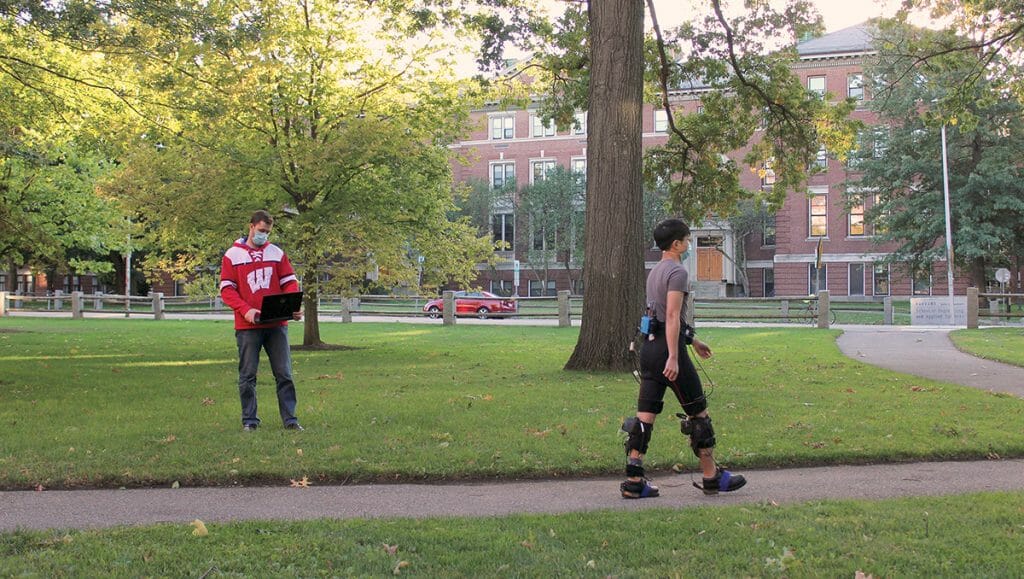A Wearable Sensor to Help You Move
UW researchers figure out how to customize exosuits used for rehab.
Exosuits are wearable devices that could help people rehab from an injury or even give them extra oomph if they’re carrying something heavy. Exosuits elicit a specific change in the wearer’s biomechanics — for example, a robotic device worn on a person’s ankle can be programmed to pull at just the right time during walking to potentially offload the calf muscles and Achilles tendon.
Until recently, creating the desired effect on an individual wearer has been challenging. There hasn’t been a good way to directly measure the changes in loading on muscle and tendon tissue that occur when a person uses an exosuit. But a team of researchers from UW–Madison and Harvard University has solved that problem, employing a unique wearable sensor called a shear wave tensiometer.
Developed by UW–Madison engineers, the noninvasive device is easily mounted on the skin over a tendon. The tensiometer enables researchers to directly assess tendon force by looking at how the vibrational characteristics of the tendon change when it undergoes loading, as it does during movement.
The research team performed rigorous biomechanical experiments with the tensiometer in the lab as well as outdoors to demonstrate real-world viability.
“If you want to send these devices home with people, or if a person wants to buy one for personal use, then understanding how the exosuit performs in those environments is really important,” says Dylan Schmitz MS’19, PhDx’23, a UW–Madison mechanical engineering student.
The researchers’ findings underscore the importance of customizing an exosuit to its user so that it can be more useful in real environments.
“Different people are going to react to an exosuit in different ways, so we can’t assume that there is a one-size-fits-all exosuit controller that is going to work for everyone,” Schmitz says. “Our tensiometer can be used as a powerful tool for tuning exosuit controllers to work effectively for individual users in different environments.”
Published in the Spring 2023 issue





Comments
No comments posted yet.